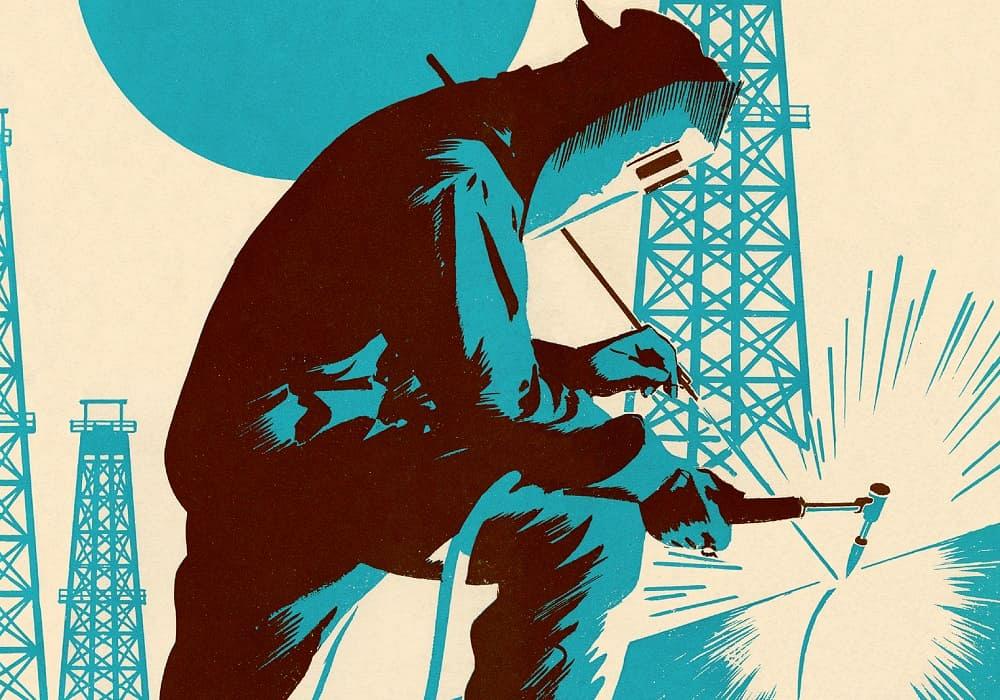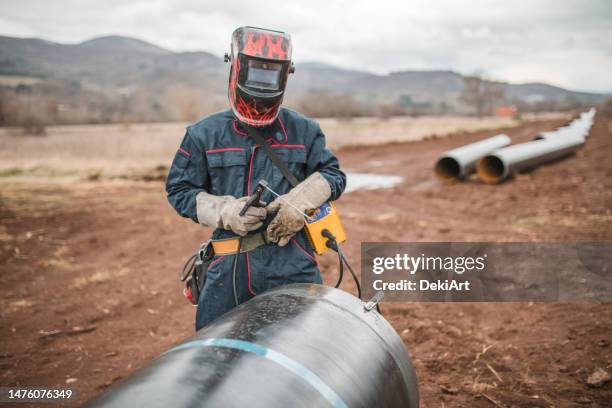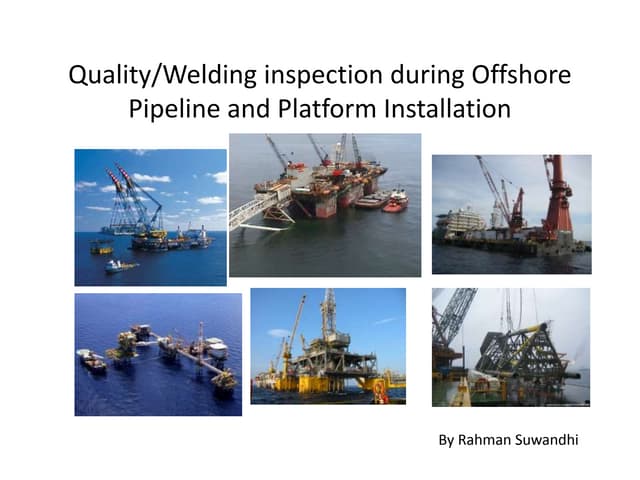Comprehensive Guide to Pipe Welding Examination: Making Certain Stability and Security in Pipeline Construction and Maintenance
The stability and security of pipes are vital in today's infrastructure landscape, emphasizing the important role of welding inspection in pipe construction and upkeep. A detailed overview on this subject not just highlights the necessity of analyzing weld quality however likewise attends to the various assessment strategies available, such as radiographic and ultrasonic testing. By understanding common flaws and their implications, stakeholders can carry out best practices that make sure compliance and durability. Nonetheless, the complexities entailed in welding evaluation raising relevant inquiries regarding sector criteria and the advancing modern technologies that may redefine these practices.

Importance of Welding Evaluation
Welding inspection plays a crucial function in making sure the stability and safety and security of pipe systems. It functions as a basic procedure that validates the top quality and reliability of bonded joints, which are often the most vulnerable points in pipe construction. With methodical analysis, examiners can identify possible defects such as cracks, porosity, and incomplete blend, which may jeopardize the structural stability of the pipe.
The significance of welding examination extends beyond plain conformity with sector requirements; it additionally safeguards public health and the environment. Extensive assessments can improve the durability of pipe systems, lowering the need for costly repair work and downtime.
In enhancement to making certain safety and compliance, welding inspection promotes a culture of quality assurance within companies. By focusing on inspection throughout the welding process, business can build a reputation for dependability and quality, inevitably causing raised customer confidence and business chances (Pipeline Welding Inspection). Therefore, the significance of welding inspection can not be overstated in the context of pipeline construction and upkeep
Secret Welding Processes
Different welding procedures are utilized in pipe construction, each with its very own benefits and applications. Amongst the most extensively used techniques are Secured Steel Arc Welding (SMAW), Gas Tungsten Arc Welding (GTAW), and Gas Metal Arc Welding (GMAW) SMAW is favored for its flexibility and capacity to execute well in various ecological problems, making it ideal for area applications.
GTAW, often referred to as Tungsten Inert Gas (TIG) welding, is acknowledged for its capacity to create top notch welds with superb control over heat input, making it optimal for thin-walled pipelines and stainless-steel materials. GMAW, or Metal Inert Gas (MIG) welding, uses high deposition prices and is effective for massive jobs, commonly used in the fabrication of pipelines in regulated atmospheres.
In Addition, Submerged Arc Welding (SAW) is made use of for its deep infiltration and high productivity, specifically in the building of large-diameter pipes. Each of these processes contributes to the general stability and safety of pipe buildings, allowing welders to choose one of the most appropriate method based on product type, project needs, and environmental conditions. Comprehending these vital welding processes is important for efficient pipeline welding assessment.
Usual Problems and Their Impact

Porosity, defined by little gas pockets entraped within the weld, deteriorates the product and can result in leaks. Fractures, which may occur because of thermal stress and anxieties or incorrect air conditioning, can circulate and result in structural failure under stress. Undercutting, where the base metal is eroded along the weld grain, minimizes the effective cross-section of the pipe, raising the risk of fracture.
Insufficient fusion happens when the weld steel does not properly bond with the base steel, causing weak areas that might stop working under anxiety. Slag inclusion, look at these guys the entrapment of non-metallic product within the weld, can also compromise the joint's stability. Recognizing and get more dealing with these defects early in the construction procedure is crucial to making sure the long-term reliability and safety and security of pipe systems, thus guarding both the atmosphere and the framework.
Assessment Techniques and Tools

Visual inspection is the initial line of defense, permitting inspectors to recognize surface irregularities, imbalance, or various other noticeable issues. Ultrasonic testing employs high-frequency sound waves to discover interior flaws, providing exact deepness dimensions and characterizing flaws without harming the weld. Radiographic testing utilizes X-rays or gamma rays to produce photos of the weld, making it possible for the recognition of internal gaps, cracks, or incorporations.
Magnetic bit screening is particularly effective for identifying surface and near-surface gaps in ferromagnetic materials. This technique includes applying an electromagnetic field and fine iron fragments to the weld, revealing flaws through the buildup of particles at problem sites.
In enhancement to these techniques, specialized devices such as automated ultrasonic testing equipment and digital radiography systems improve examination precision and efficiency, making certain a thorough examination of pipeline welds throughout construction and maintenance.
Best Practices for Conformity
Sticking to best practices for compliance in pipe welding assessment is essential for guaranteeing the honesty and safety and security of the framework. Organizations needs to establish a thorough quality administration system that straightens with market criteria such as ASME, API, and AWS. This consists of creating detailed welding over at this website procedures that define the certifications, techniques, and products required for welders.
Regular training and certification of inspection workers are vital to preserve high competency degrees. Examiners should know with different non-destructive testing (NDT) approaches, consisting of ultrasonic screening, radiographic screening, and visual assessment, to efficiently identify potential issues.
Documents plays a vital duty in compliance; keeping precise records of inspections, weld treatments, and workers qualifications aids to make certain traceability and accountability. Scheduled audits and testimonials of welding techniques ought to be carried out to determine areas for improvement and guarantee adherence to established protocols.

Conclusion
In conclusion, the application of extensive welding inspection procedures is paramount for ensuring the stability and security of pipe building and maintenance. Continuous renovation in assessment processes will add to the longevity and reliability of pipe systems, highlighting the critical duty of welding assessment in the market.
The integrity and safety of pipes are extremely important in today's facilities landscape, highlighting the vital duty of welding inspection in pipeline construction and upkeep. Understanding these key welding procedures is important for effective pipe welding examination.
Adhering to ideal methods for conformity in pipe welding assessment is crucial for guaranteeing the stability and security of the facilities.In verdict, the implementation of rigorous welding assessment methods is critical for making sure the honesty and safety of pipe construction and upkeep. Continual renovation in examination processes will contribute to the durability and dependability of pipeline systems, underscoring the crucial role of welding assessment in the industry.
Comments on “Making Certain Longevity with Thorough Pipeline Welding Inspection”